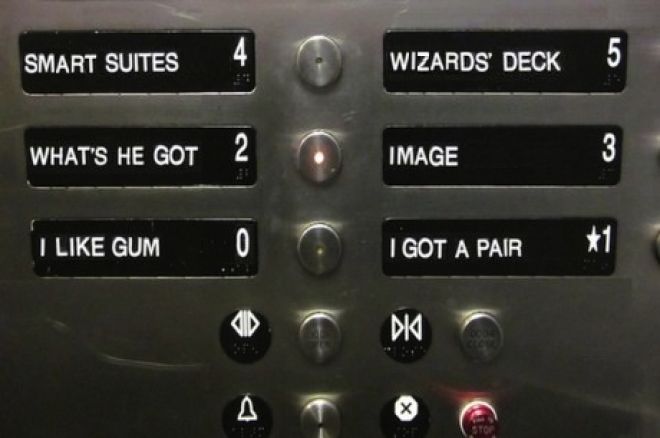Multiple-Level Thinking in Poker: At What Level Are You?

Earlier today Robert Woolley mentioned Tommy Angelo’s excellent book Elements of Poker. That got me thinking of one of the first poker books that I remember reading, No Limit Hold’em: Theory and Practice by the brilliant David Sklansky and the equally adept Ed Miller.
The book as a whole is very good, but there is one section that I remember vividly, the chapter on multiple-level thinking.
According to Sklansky and Miller, there are six levels to a poker player’s thinking, which confusingly starts at Level 0. This lowly level is reserved for complete amateurs — or perhaps someone who is blind drunk — and basically says “I know nothing about poker!” We’d love to play against Level 0 thinkers all day long, wouldn’t we?
Meanwhile, Level 1 is the base level of thinking for poker players and basically consists of knowing what your hand is. Again, like Level 0, this level of thinking is extremely basic and thinking like this will result in losses against the vast majority of players a Level 1 thinker encounters.
A large section of poker players fall into the Level 2 category, which finds the player asking the question “What does my opponent have?” At this level of thinking, players are aware of what their own hand beats and start to give thought to what their opponent’s hand strength is. The majority at this level are still losing players, but at least they are progressing the right way up the multiple-level thinking ladder.
Once you hit Level 3, things start to become a little complicated (although some may say more interesting). If you are a Level 3 thinker, whenever you’re involved in a hand you will be wondering to yourself, “What does my opponent think I have?” and trying to play your hand based on how your hand strength is perceived by your opponents.
Level 3 players are generally more situationally aware and will often bluff in optimal spots rather than marginal ones, thanks to being able also to project a range of hands onto those around them. The slight difference from a Level 2 thinker to a Level 3 can often be the difference of being a losing player to a winning one.
Now before we continue, I have to ask if you are sitting down because this is where matters really start to become tricky. To reach Level 4 you need to be asking yourself, “What does my opponent think that I think he has?” It sounds complicated, and it is, and even if you are thinking on this level it is unlikely any of your opponents are anyway!
Level 5 is reserved only for the elite thinkers in the game and will be almost useless for us mere mortals, but for completeness’ sake I will let you know what is involved in Level 5 thinking. Have you ever played a hand and thought to yourself, “What does my opponent think that I think he thinks I have?” No? I thought not! Seems ridiculous, doesn’t it? Yet there will be some battles taking place right now where players are thinking on that high level, on another plane than the rest of us.
The key to success is to figure out what level of thinking your opponents are on and then come up with a strategy to combat them that they will understand. There is little point in adopting an approach that only a Level 4 thinker will understand if you are trying to apply it to players who only care that they have a pair of fours in their hand and about nothing else.
Thinking one, possibly two in some cases, levels above your opponent should give you a substantial edge against them — just don’t overcomplicate matters and out “level” yourself!
Photo © BrokenSphere / Wikimedia Commons (adapted), Creative Commons Attribution-Share Alike 3.0 Unported
Get all the latest PokerNews updates on your social media outlets. Follow us on Twitter and find us on both Facebook and Google+!








